U.S. Energy Dept. Revives the Loan Programs Office, a Tesla-Scale Decarbonization Tool


Tesla was only making the luxury Roadster when it received a $456 million loan from the DOE's Loan Programs Office, which helped push the automaker into the mass market. Now coming full circle, the second edition of the Tesla Roadster is expected to be released later this year.
A key decarbonization asset in the U.S. gathered rust during the Donald Trump administration, and after two years of hard work, it is finally fit for duty again. That is the Department of Energy's Loan Programs Office, the small but highly influential government financial resource that counts an early loan to Tesla Motors among its success stories.
The facts behind the Loan Programs Office
The Loan Programs Office was established by the federal Energy Policy Act of 2005 during the administration of former President George W. Bush. It was tasked with providing loans and loan guarantees to innovative companies in the areas of fuel efficiency and clean energy.
The goal was to help bridge the gap between new, commercial-ready technology and the mass market. Its best-known success story is Tesla Motors, a company that seemed destined to languish in the luxury niche market when it first launched in 2006. Tesla only produced a total of 2,500 units of its first vehicle, the two-seat Roadster sports car, which it introduced in 2008 with a price tag that easily topped $100,000.
The picture was quite a bit different after 2010, when Tesla received a $456 million loan from the Loan Programs Office. By 2012, the company stopped production of the Roadster and was ready to produce the now-familiar Model S.
“Tesla's first vehicle, the Lotus-inspired Roadster, was first produced in 2008. This limited production model only sold 2,500 units. At that time, Tesla was a sleepy EV company – and it wasn't until 2012 with the Model S that the company was a household name. In the first year of production, Tesla sold 3,000 Model S units,” U.S. News and World Report noted last November in a recap of the company’s sales to date.
That particular article failed to mention the $456 million loan that launched the Model S, but it did note that Tesla jumped production up to 22,477 in 2014, and went on to produce millions.
Despite the reputational chaos surrounding Tesla CEO Elon Musk in recent years, the company’s success is widely credited with setting the stage for other startups and legacy automakers to produce electric vehicles for the mass market, along with a growing ecosystem of battery innovators, charging station manufacturers and related stakeholders.
Although the Loan Programs Office focuses on startups, it also provides loans to legacy firms that are innovating in new areas. One notable success story in that area is Ford Motor Co. Ford refused federal Recovery Act funding after the economy crashed in 2008, but it did take a $5.6 billion loan from the Loan Programs Office for factory upgrades in 2009.
Ford went on to ramp up its electrification plans in 2015 and 2018, and it was the first mass market automaker to carve a path from electric sedans to light-duty trucks when it introduced the all-electric Lightening F-150 in 2021 to widespread acclaim.
What happened to the Loan Programs Office?
The Loan Programs Office was launched under a Republican president, which should have sheltered it from partisan attacks. The financial success of the program creates more foundation for bipartisan support: Overall, interest on loans has more than offset losses from other recipients that went bankrupt.
In 2019, the Bipartisan Policy Center noted that “LPO projects have transformed American energy infrastructure and accelerated growth in clean energy and electric vehicle markets,” creating or saving thousands of jobs, with projects generating a total investment of more than $50 billion.
“Further, LPO projects have prevented 34.7 million metric tons of carbon dioxide emissions and saved 1.7 billion gallons of gasoline and counting,” they added.
That gasoline-cutting achievement explains why the office became a target for fossil energy stakeholders and their allies in Congress after President Barack Obama took office in 2009.
The Republican party took control of the House of Representatives in the 2010 midterm elections, and promptly tried to withdraw funding from the program. They also ginned up public opinion against the program by flogging the bankruptcy of the solar panel manufacturer Solyndra in public hearings.
To the surprise of no one, the Loan Programs Office was practically mothballed after Obama left office in 2016. Upon entering the White House, former President Trump repeatedly announced his intention to defund the program. The sole exception was a multibillion-dollar bailout for the Vogtle nuclear power plant, which continues to suffer from delays and cost overruns.
$350 billion more for clean energy projects
Someone in the Loan Programs Office was looking forward to a new administration, though. In December of 2020, just a few weeks after Trump lost his re-election bid, the Loan Programs Office publicized new guidance on loan applications, with a focus on critical materials needed for electric vehicles, solar cells, wind turbines and other clean tech.
In March of 2021, shortly after President Joe Biden took office, the office issued a solicitation for companies to proposed projects for achieving Biden’s goal of 30 gigawatts in new offshore wind capacity.
Restoring trust in the office has been slow going, though. Last week, Bloomberg noted that the office has received more than 100 applications over the past two years but has made only four conditional loans or loan guarantees.
The head of the office, Jigar Shah, is seeking to raise awareness about the power of the program to vault innovators into the mass market. He has gotten a big assist from the Democratic members of Congress who voted for the 2022 Inflation Reduction Act, which passed into law with the support of exactly zero members of the Republican party.
As described by Bloomberg, the Inflation Reduction Act added another $350 billion to the office’s previous loan authority of $44 billion, for a total of $394 billon. In terms of success stories, that’s the equivalent of scores more Teslas, Fords and other innovators funneling new decarbonization technology into the U.S. economy.
Of particular note is a provision in the Inflation Reduction Act that removes a cap on the total amount of loans for auto manufacturing, under an existing division of the office called the Advanced Technology Vehicles Manufacturing Loan Program.
Aside from benefitting car makers, removal of the cap sets the wheels in motion for a previously unfunded provision in the Bipartisan Infrastructure Law to take effect. That provision expanded the Vehicles Manufacturing Loan Program to include medium- and heavy-duty vehicles, locomotives, maritime vessels including offshore wind vessels, aviation and hyperloop.
The Inflation Reduction Act also added funding for an entirely new program in the Loan Programs Office. The newly formed Energy Infrastructure Reinvestment Program aims to help “retool, repower, repurpose, or replace energy infrastructure that has ceased operations or to improve the efficiency of infrastructure that is currently operating.”
Some examples of qualifying projects could include converting fossil energy sites to clean technology, retrofitting older wind farms with more efficient turbines, and replacing conventional solar arrays with agrivoltaic systems.
The Loan Programs Office is poised for a rush of new business under the Biden administration. As for what happens after Election Day 2024, that’s partly up to those in the business community who lend financial support to candidates for office.
The run-up to the 2024 presidential election cycle is already looming into view. The choice of which candidates to support should be clear to every business that seeks to court the up-and-coming generation of consumers, clients and voters.
Image credit: Tesla (press use only)
Survey Shows Americans Are Willing to Change Their Lifestyles for the Climate. Bill Gates Disagrees.


Demonstrators reinforce the global target to cap temperature rise at 1.5 degrees Celsius above pre-industrial levels.
The climate crisis is changing how some Americans think about their own futures, according to a new survey — with 1 out of 4 worried they may have to give up long-term goals like starting a family. It’s no wonder then that half of U.S. respondents said they're willing to abide by the vast majority of changes needed to restore our planet. Yet billionaires like Bill Gates have been shamelessly using their platforms to blame the state of the climate on the masses.
Gates reasserted his belief that it will be up to technology to save us from ourselves on his annual Ask Me Anything Reddit thread this month, hinting at his earlier statements that regular people just aren’t willing to abandon their extravagant lifestyles in order to limit rising global temperatures.
While the third richest man in America is clearly out of touch with the rest of us, he continues to tell on himself by emphasizing products that consumers can buy instead of encouraging everyone to scale down. Gates’ response to one Redditor’s question — “What’s the biggest way an individual can contribute to the climate solution?” — failed to address any tangible lifestyle choices that people can make to significantly lower their carbon footprints. Even worse, the solution he offered would actually lead to increased emissions and environmental destruction if everyone took his advice.
“You are a voter, a consumer, a giver and a worker. In every one of those roles you can help,” Gates wrote on Reddit, without offering any significant options for doing so beyond “buying an electric car helps” and “there will be options to pay a bit extra to offset your travel emissions coming soon."
But buying an electric vehicle (EV) prematurely — when the ICE (internal combustion engine) vehicle in the driveway is still running just fine — does not lead to a net reduction in carbon emissions. Truly, if it were even possible for every American to ditch their ICE vehicle for an EV right now, meeting that demand would create a dramatic rise in global emissions and cause substantial environmental damage from mineral extraction.
Such flip suggestions miss the entire point of transitioning to cleaner energy and transportation, seemingly demonstrating Gates’ interest in keeping mass consumption rolling. He continued by mentioning that he already pays to offset his family’s travel — once again giving away the same “let them eat cake” mentality he has previously exhibited in regards to overshooting the targeted cap on global temperature rise at 1.5 degrees Celsius.
In fact, as we learned last year, Gates spends $9 million annually on carbon offsets to make up for his own lifestyle — an astronomical amount that begs two questions. Just how lavishly does he live? And does he do anything at all to limit his own carbon footprint? (It’s hard to imagine to what extent he does, considering the sheer number of private jets he owns.) The billionaire was clearly speaking about himself when he told Bloomberg’s “Zero” podcast that the people of Earth would be unwilling to give up their lifestyles to lessen the effects of the climate crisis.
Of course, as the recent survey — conducted by researchers from Elabe on behalf of the private resource management firm Veolia — demonstrated, he’s wrong. Half of U.S. respondents across age groups, genders and geographies said they're willing to make sacrifices to fight climate change — and 55 percent recognize that technological advances will not be enough. We have to change how we live, a concept that Gates and his peers choose not to comprehend.
Likewise, concerns from the financial elite about slowing population growth feel rather ironic when faced with the quarter of Americans surveyed who fear they may have to forego major life events like having children because the planet is on its way to becoming unlivable. What’s more, 52 percent of U.S. respondents want to see more conversations about climate change and its solutions, agreeing that it’s difficult to imagine “ecological transformation” without them. But that’s not surprising with billionaires like Bill dominating the dialogue.
Image credit: Mika Baumeister/Unsplash
West Virginia Invests in Iron-Air Battery to Lead the Clean Energy Revolution


A wind farm in Pierce, West Virginia.
Under the guise of protecting state pension funds from something called “woke capitalism,” a number of states have recently imposed sanctions on financial institutions that invest in clean energy. However, their actions already appear to be ineffectual. West Virginia is a case in point. If all goes according to plan, the state’s new venture with the iron-air battery startup Form Energy will help accelerate the pace of clean energy investment across the U.S., woke or no woke.
West Virginia vs. woke capitalism
The “anti-woke” argument has slipped into the national conversation with the help of high-profile governors like Greg Abbott of Texas and Ron DeSantis of Florida, who seek to disparage renewable energy as part of their crusade against ESG (environment, social, governance) investing.
West Virginia has cut a lower profile on the national scene, but it’s not for lack of trying. West Virginia State Treasurer Riley Moore made sure that his home state was in the mix when financial officials in 16 states released an open letter in 2021, warning banks against boycotting fossil energy industries.
The goal of the 16-state coalition, as described by Moore, is to “protect our states’ economies, jobs, and energy independence from these unwarranted attacks on our critical industries.”
West Virginia didn't get its own memo
Despite the forcefulness of the letter, Moore apparently forgot to include Gov. Jim Justice and the West Virginia Development Authority in the plan to thwart renewable energy investment.
In December, Gov. Justice announced that the West Virginia Economic Development Authority has invested $75 million to acquire 55 acres of property in the industrial city of Weirton, under a partnership with Form Energy.
Form was attracted in part by the opportunity to set up shop along the Ohio River. Another attraction was the financial package offered by West Virginia.
“We structured a unique financial incentive package worth up to $290 million in asset-based, performance financing to support their decision to locate in Weirton,” Justice said. The governor also cited at least 750 new jobs and a total investment of up to $760 million in the state’s economy.
“The funds put toward this project are guaranteed, secured, and collateralized through ownership of all land and buildings by the state,” Justice emphasized, adding that his office plans to work with state and federal agencies to nail down the other $215 million in assistance needed to complete the package.
In addition to the Economic Development Authority, other backers of the plan cited by Form Energy are West Virginia Secretary Mitch Carmichael, Speaker of the House of Delegates Roger Hanshaw, Senate President Craig Blair and officials in Weirton’s home county of Hancock.
U.S. Sens. Joe Manchin and Shelley Moore Capito also put their seals of approval on the venture.

The significance of long-duration energy storage
Form has focused its new iron-air battery on long-duration energy storage capability. The company says its technology can store electricity for 100 hours.
That is a significant break with conventional lithium-ion batteries. Though lithium-ion battery systems are commonly used for storing excess wind and solar energy, they only last for a few hours.
Overcoming the long-duration barrier means that energy storage facilities can provide electricity to the grid for days on end, just like a conventional fossil energy power plant. Long-duration energy storage is the key that will ramp up the pace and reach of wind and solar development, squeezing fossil energy out of the power generation sector.
At the present time, hydropower is practically the only form of long-duration energy storage available on a large scale in the U.S. The introduction of new technologies will enable long-duration storage to expand into new territory, independent of hydrological and geological features that are needed for hydropower.
West Virginia to lead the long-duration energy storage revolution with iron-air battery
Form Energy plans to begin construction on its new iron-air battery factory in Weirton this year, with product delivery expected in 2024. The short timeline is made possible in part by supply chain efficiencies that derive from the iron-air platform.
“The active components of our iron-air battery system are some of the safest, cheapest, and most abundant materials on the planet — low-cost iron, water and air,” Form explains.
“Iron-air batteries are the best solution to balance the multi-day variability of renewable energy due to their extremely low cost, safety, durability and global scalability,” they add.
Form also emphasizes that costs for its 100-hour iron-air battery system are competitive with legacy power plants.
As described by Form, the first iron-air batteries to roll off the Weirton assembly line will be followed by other iterations.
“This product is our first step to tackling the biggest barrier to deep decarbonization: making renewable energy available when and where it’s needed, even during multiple days of extreme weather, grid outages or periods of low renewable generation,” the company said.
That certainly sounds like West Virginia will soon export fossil energy-killing technology all around the country, regardless of Moore and the anti-ESG movement.
As for Moore, in December he criticized a new Joe Biden administration rule that widens the discretion of pension managers to consider ESG principles, in addition to speculation that he is preparing to run for a seat in the U.S. House of Representatives.
The Secret to Accurate Scope 3 Accounting Is Sharing Trusted, Auditable Carbon Data Across Networks


Around the world, there is a growing realization that companies, not consumers, are key to the rapid reductions in greenhouse gas emissions needed to mitigate the worst impacts of climate change.
Here’s the challenge: Most corporate emissions fall into the category of Scope 3 emissions, the business term for emissions that occur within a company’s value chain but outside of its direct control. Examples of Scope 3 emissions include those tied to the manufacture of raw materials or those produced when a consumer uses a product. In most business sectors, they represent over 80 percent of emissions.
Reducing these upstream and downstream impacts is where companies can make the biggest difference. But addressing Scope 3 emissions requires better technologies — including methodology and GHG Protocol guidance on end-to-end value chain transparency and openly sharing of actual and verified emissions data, which not based on estimates or averages, that are ideally accounted for down to the individual product and supplier level. This puts technology innovators like the software company SAP in a prime position to drive change.
“We are working on technologies, which can enable our Intelligent Enterprise customers to have a true carbon picture across their value chain,” Anita Varshney, global vice president for strategy at SAP Sustainability Engineering, told TriplePundit.
Enabling action to reduce Scope 3 emissions
The increasing focus on Scope 3 emissions means it’s no longer enough for companies to be carbon neutral in their direct operations. Sourcing 100 percent clean energy, a common press release headline, sounds significant, but it’s often a drop in the bucket when looking at the entire footprint of a company’s broader impact.
Even forward-looking companies, however, face numerous barriers to even get accurate accounting for their Scope 3 emissions, let alone devise plans to act on it. One reason is that, until recently, the methods for accounting and measuring value chain emissions were slow and cumbersome.
“Traditionally, Scope 3 data has never been collected in a systematic way because sustainability wasn’t a core business priority in the past,” Varshney said. “[Companies] were getting it from different sources, from Excel sheets, from averages, and it was never easy, as the data was not within their company. Companies have to reach out to their suppliers, to the different facilities and the people who are operating them.”
Varshney’s team found themselves working with companies that had many years of data trapped in spreadsheets. This data was not well managed and difficult to analyze and act upon, much less share with others who likely use different calculations, methods and technologies.
The GHG Protocol, a standardize framework for GHG measurement launched by the World Resources Institute (WRI) and the World Business Council for Sustainable Development (WBCSD) in 2001, also hasn’t been revised in many years. With upcoming mandatory disclosure requirements from the U.S. Securities and Exchange Commission and International Sustainability Standards Board (ISSB), sustainability leaders “need a much better definition of each of the Scope 1, 2 and 3 categories,” Varshney said. WRI and WBCSD are accepting stakeholder feedback on proposed changes to the GHG Protocol until Feb. 28.
It’s clear that a combination of both better technology and accounting standards could empower better action by companies on Scope 3 emissions. SAP knows this well, having embarked on its own journey to measure and address its own Scope 3 emissions through green cloud data centers, carbon offset mechanisms and more.
While this is meaningful, Varshney said the potential for real impact is in partnership with the customers SAP serves. “SAP is a technology company. Our footprint is minuscule compared to the heavy emitters of the world, most of which are our customers.”
Industry-wide carbon data networks are growing
As a technology solutions provider, SAP is working with companies to use data to measure both the scale of emissions and how to address them. And on that front, the company and its customers aren’t alone. Growing cross-sectoral and multi-company efforts are looking to scale up the measurement, assessment and reduction of Scope 3 emissions through innovative carbon data networks.
One such initiative is the Partnership for Carbon Transparency (PACT), led by the well-respected World Business Council for Sustainable Development (WBCSD) that convenes organizations across industries to tackle the Scope 3 emissions data challenge.
“We want to have a consistent methodology that everybody follows and agrees on the way of calculating, reporting and exchanging data in an auditable way,” Varshney explained.
To achieve this, PACT created the Pathfinder Network, an open network that allows companies to connect different technology solutions and support peer-to-peer data sharing across value chains and industries. SAP is one of the network’s technology partners, along with CircularTree, IBM and Siemens.
Creating interoperability might sound like a small change, but it is actually huge, says Gunther Walden, CEO and founder of CircularTree.
“Decarboniz[ing] supply chains...needs an ecosystem of interoperable solutions to easily exchange product carbon footprint information,” Walden said in a statement. “We are excited to be part of this ecosystem and to support companies in achieving their sustainability targets.”
Since its launch, PACT has set standards for emissions data exchange, conducted a successful pilot with member companies, and is looking to bring more technology solutions on board, including from Amazon, Microsoft, iPoint and Sage Group. The Framework is already in version 2.0, which will be launched later this week.
The challenge now is one familiar to anyone working in the corporate decarbonization space: We need to speed up, and scale up, quickly. And that won’t be easy.
“There is progress, but it’s early days in the context and the scale of the problem that we are looking at. But we must continue on our momentum on achieving this radical transparency.” Varshney said.
Expanding the scope of carbon data networks to tackle Scope 3
So, what’s the path forward for carbon data networks like PACT to increase their impact? Quite simply, more companies need to come on board.
Several corporate partners are already working with PACT, including major global companies like Solvay, Aptar, Unilever and P&G, and they are optimistic that these new data-sharing tools will make a difference.
“The PACT initiative is actively removing barriers and making it easier for suppliers to share their product-level footprint,” said Reginaldo Ecclissato, chief supply chain officer at Unilever, in a statement. “It’s a move that will be replicated by companies across sectors and geographies, unlocking faster climate action as we all work toward a net-zero future.”
While this work is meaningful, Varshney is quick to point out that the only way to get the emissions reductions we need is if everyone works together. If these larger companies, through carbon data networks, could also support and empower their mid-small sized suppliers to also act, it would unlock even greater potential for decarbonization.
“Value chain collaboration will heavily depend upon how these big companies are coming forward to push the data transparency together with their suppliers,” Varshney explained. “They have to work together with the smaller companies that need more budget and resources.”
SAP hopes to play a central role in this. Beyond its contribution to PACT, the company is collaborating with its strategic customers to build industry innovations like Catena-X for SAP Industry Network for Automotive.
“With partners like Accenture, we are already leading several global conversations about driving sustainability transformation with carbon intelligence at the core,” Varshney said. “Regionally, there is growing focus as well. In Australia, we teamed up with the Australian Climate Leaders Coalition to launch the Scope 3 Roadmap: Practical Steps to Address Scope 3 Emissions." This roadmap is underpinned by five proofs of concept and provides a practical, step-by-step plan that gives business leaders the tools to tackle Scope 3, create 1.5C value chains, and understand and capitalize on the opportunities the transition presents through new business models, partnerships and growth markets.
“Companies must accelerate their decarbonization actions, deriving actionable insights from true data and scale it across their value chains with their partners, quickly,” Varshney told us. "When it comes to climate change, we need to execute on our ambitions, faster than ever before.”
This article series is sponsored by SAP and produced by the TriplePundit editorial team.
Image credit: william william/Unsplash
Everything You Need To Know About the New Nature-Related Risk Disclosures


The United Nations Environment Program (UNEP) and S&P Global announced the Nature Risk Profile, a methodology to analyze companies’ impacts and dependencies on nature, at the World Economic Forum annual meeting in Davos, Switzerland, on Tuesday. It comes on the heels of the agreement made in December at the U.N. Biodiversity Conference (COP15) held in Montreal.
The idea behind the movement to include nature or biodiversity risk in financial disclosures is largely due to the fact that roughly half of the world’s GDP is either highly or moderately dependent on nature. Should we see significant biodiversity loss in the near future, as has been projected, that puts a lot of businesses and investments at risk. Having companies disclose their nature-related risk is not just a measure to promote environmental responsibility, but also to ensure investors and asset managers that all financial risks are accounted for.
What is nature-related risk?
Business is highly dependent on nature. A lumber company relies heavily on the trees it cuts down to generate revenue. Generally, these companies aren’t sourcing trees from natural forests, but managed plots where they grow and harvest their trees. Still, a drought, flood, fire or significant soil degradation would be harmful to their activities. That is a nature-related risk.
Likewise, a mining company is heavily reliant on access to a water source for mineral processing and cooling the temperature of cutting instruments. If all of a sudden a company's water source dried up or was blocked somewhere upstream, it would be detrimental — another nature-related risk.
These risks also apply to companies that source their materials or products from suppliers with significant nature-related risks. An electronics company, for example, is reliant on the raw materials that mining companies produce. That water-related mining risk would also affect companies like Samsung, Apple and Tesla.
When will nature-related risk reporting come into effect?
It’s unlikely that we'll see any obligations for companies to report on their nature-related risk coming out this year. Even if the U.S. Securities and Exchange Commission (SEC) decided to fast track this component of financial disclosure, we are still likely a couple years down the road from mandatory disclosures.
The concept of nature-based reporting is not entirely new. Launched in 2021, the Taskforce on Nature-related Financial Disclosures (TNFD) provides reporting frameworks for businesses to evaluate their nature-related risk. In fact, this framework is expected to have a strong influence on the Nature Risk Profile in development. Businesses that want to get a head start on the matter should explore the TNFD to familiarize themselves with potential reporting requirements.
Will this affect small businesses as well?
Small businesses that don’t have significant public investment will unlikely be legally required to disclose their nature-related risk, but that doesn’t mean they won’t be affected by it. Large companies that have to report will require specific information from their suppliers related to nature risk, and if small businesses are suppliers to any of these larger companies, they will need to have that information on hand.
If we think about it similarly to the way that Scope 3 emissions are calculated, where a company has to calculate the emissions created by its entire supply chain, suppliers with fewer nature-related risk factors will be much more attractive to large companies that want to minimize their risk. Avoiding potential supply chain disruptions, as well as being a more appealing option for environmentally-conscious investors, will steer large companies to suppliers with low nature-related risk.
What are some of the challenges to nature-related risk reporting?
In terms of developing regulations to require nature-related risk disclosure, it’s important that the terminology is clear. Various reporting standards, all requiring slightly altered versions of the same thing, would only create confusion — much like the criticism that the ESG movement has seen.
As well, a cohesive accountability mechanism needs to be developed to avoid greenwashing. That could come in the form of external auditors to confirm corporate claims or strong financial penalties that eliminate the incentive to greenwash.
It’s encouraging to see the way that the business world is moving as we acknowledge the severity of the climate crisis and the urgency to change the way we do business. Slowly but surely, the sustainability movement is entering the mainstream financial sector.
Image credit: Pexels/mali maeder and Unsplash/Boudhayan Bardhan
Where Has All the Water Gone? Utah’s Great Salt Lake on the Verge of Collapse
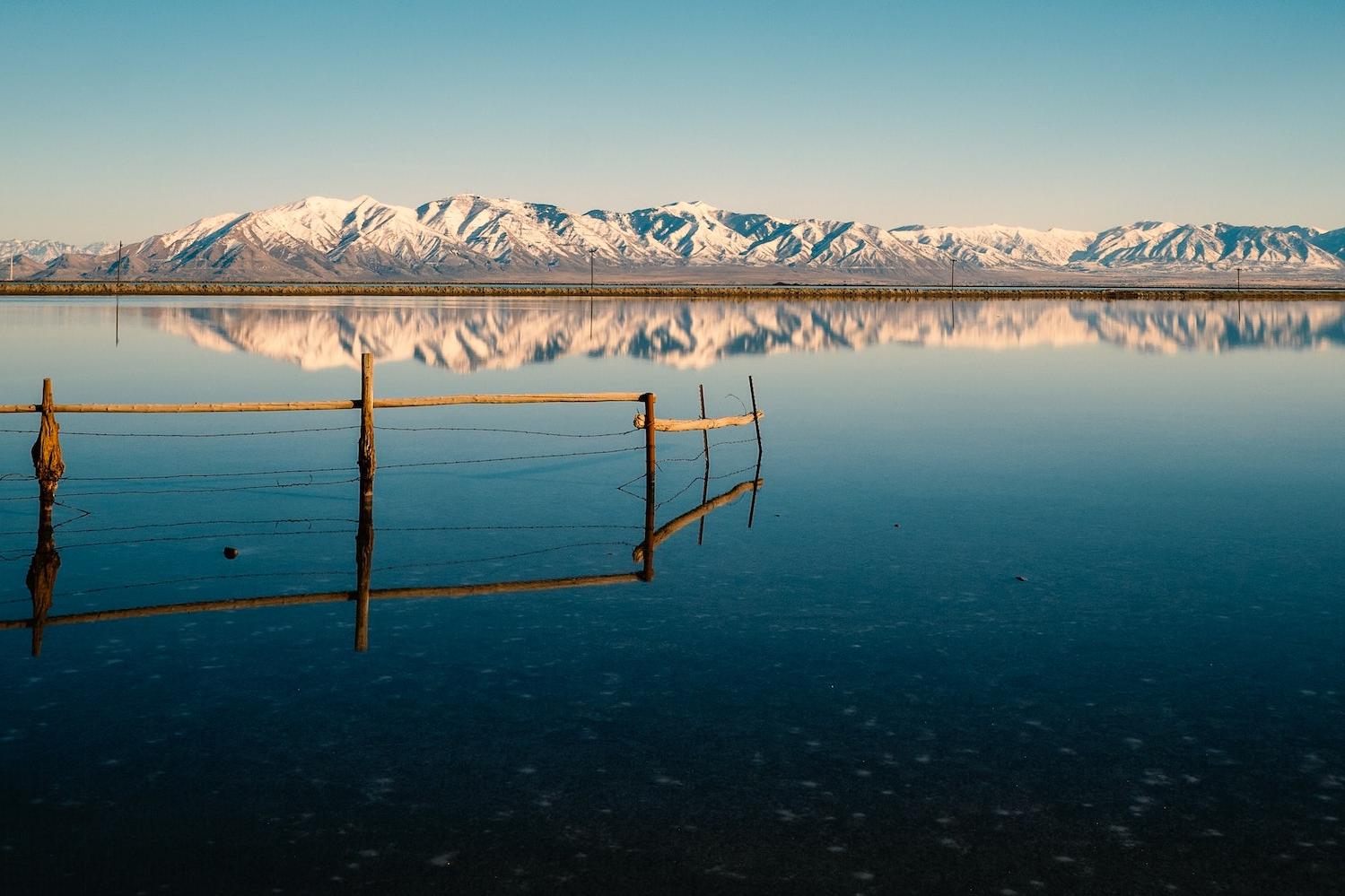
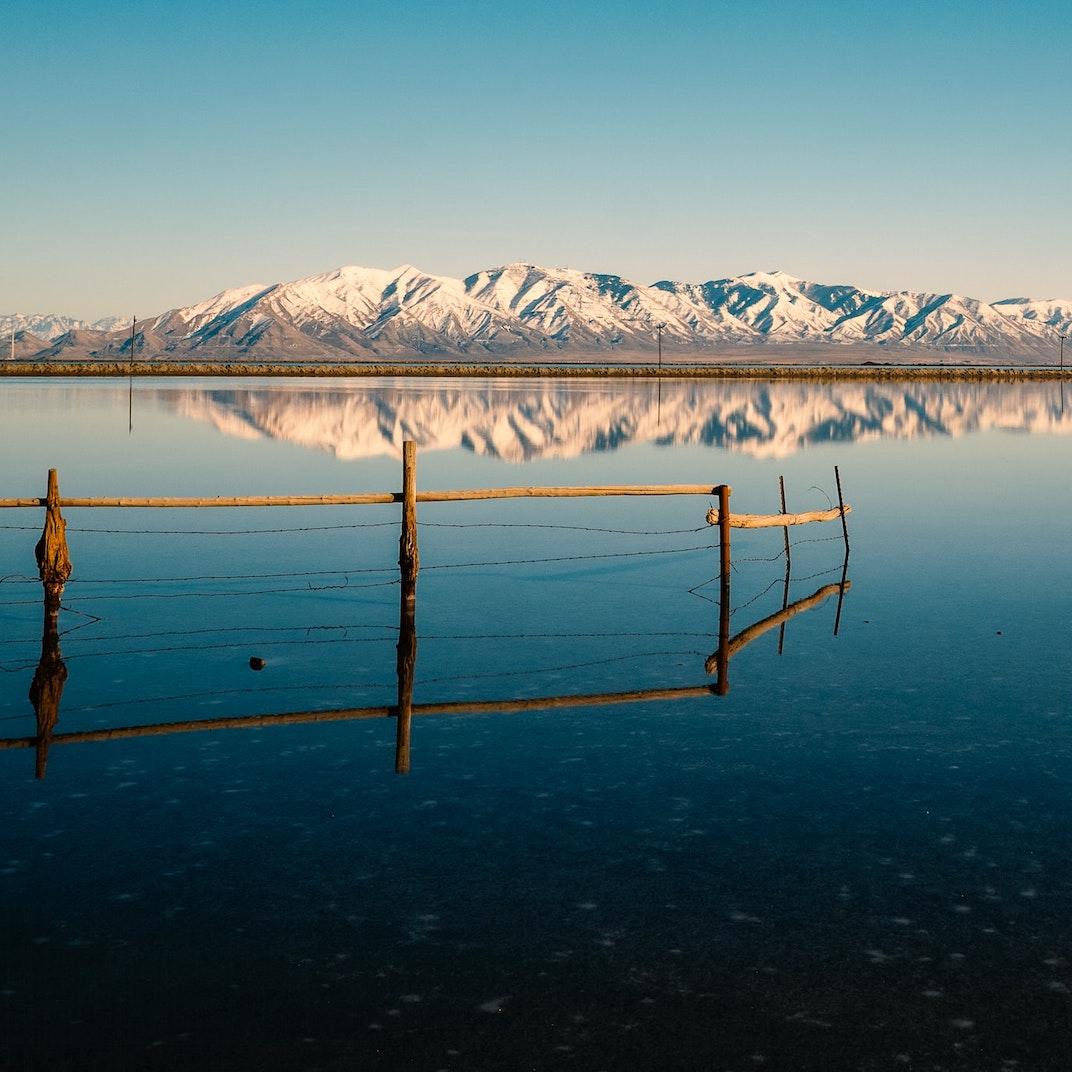
Utah’s Great Salt Lake has lost 73 percent of its water, and its rapid disappearance is threatening ecosystems, public health and the region's economy. Unless drastic measures are taken in the coming months, the Great Salt Lake could be lost completely within five years, a team of 32 scientists, conservationists and consultants warn in a new report. The Great Salt Lake is a critically important ecosystem for a myriad of species and is also responsible for $2.5 billion in economic activity annually. Additionally, water loss is exposing a layer of toxic dust on the lakebed which threatens the health of nearby communities.
Where has all the water gone?
The Great Salt Lake is 6.9 million acre-feet below the minimum healthy level and is continuing to lose over 1 million acre-feet of water annually. (For reference, one acre-foot of water is equal to about 326,000 U.S. gallons.)
Since 2020, excessive water diversions in the form of dams and canals have prevented the lake from taking in the streamflow it needs to sustain healthy levels, according to the new report. Over two-thirds of the streamflow that would naturally refill the Great Salt Lake is being diverted for farms, mineral extraction, home lawn irrigation and electricity production.
Climate change is not the primary cause of the lake’s perilous state, but it is intensifying the crisis. Utah is currently experiencing approximately 4 degrees Fahrenheit of warming due to human-caused climate change. Increased temperatures cause a decrease in runoff and an increase in evaporation, and scientists project that approximately 9 percent of the Great Salt Lake’s water loss is associated with climate change. Climate change is likely to continue exacerbating evaporation of streamflow, meaning that water loss due to warming is on a path to accelerate.
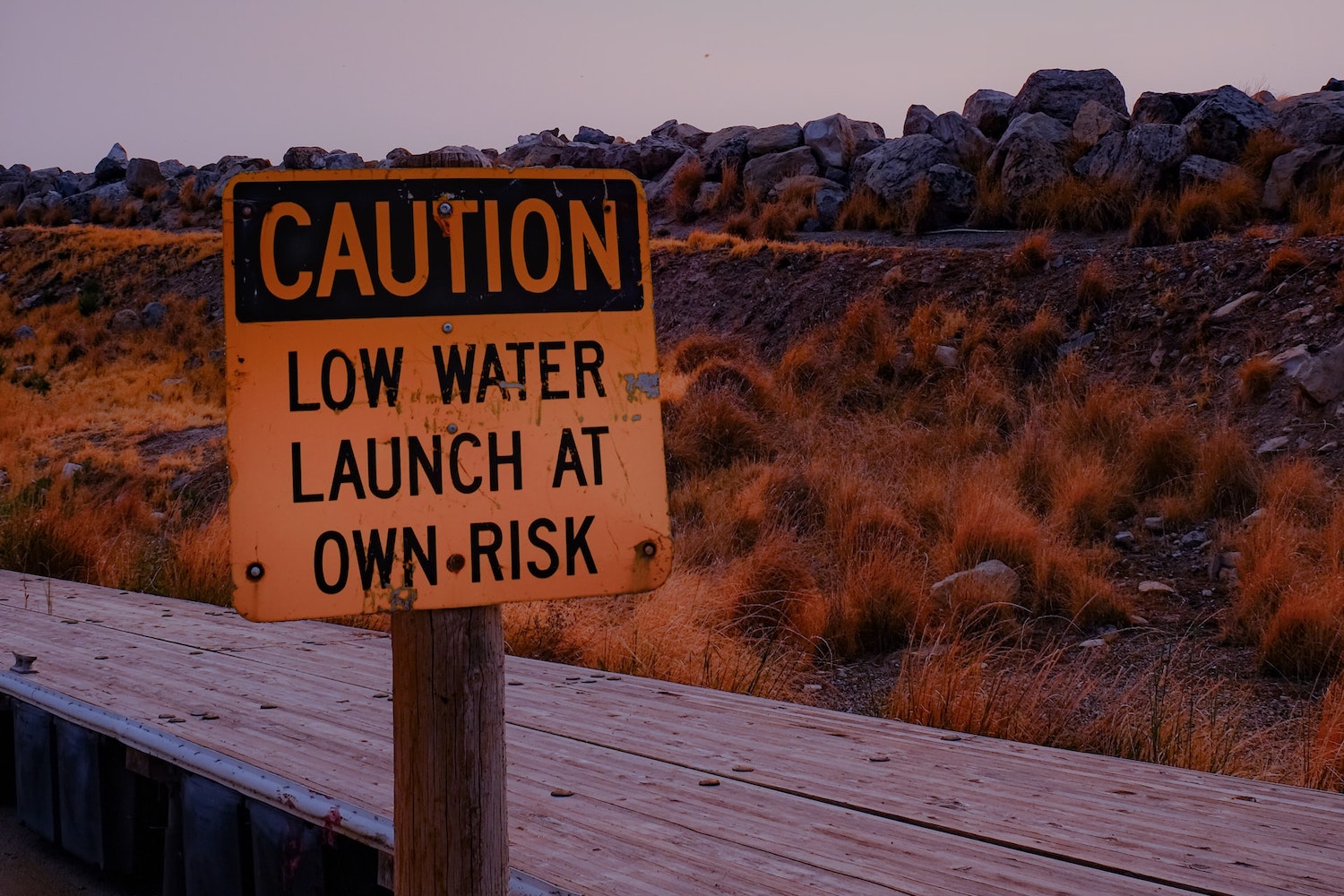
The socio-ecological impacts of a declining Great Salt Lake
The Great Salt Lake is already showing signs of imminent collapse. The lake has lost 60 percent of its surface area and 73 percent of its total water, and this level of water depletion makes the remaining lake water even saltier. The increased salinity is destroying the food web for keystone species like brine shrimp and brine flies, and the loss of those species will lead to the collapse of local wildlife populations and migratory birds.
A recent economic analysis showed that if the Great Salt Lake collapses, it would cost Utah around $2 billion annually and the area would lose over 6,600 jobs. Mineral extraction from the lake is already losing viability due to decreased water levels, and exposed dust from the lakebed is threatening agricultural productivity in the area.
The Great Salt Lake also contributes up to 10 percent of the snowfall in area mountains due to evaporation, so if the lake disappears, nearby economies and ecosystems that depend on ample snow will also be affected. Snowfall in nearby mountain ranges sustains 20,000 jobs and accounts for $1.8 billion annually in economic activity. Exposed dust from the dried areas of the lakebed are already being deposited by the wind onto nearby snowpack, leading to premature snowmelt.
Can the Great Salt Lake be saved?
The report calls for a rapid, coordinated education and intervention plan to decrease water demand and save the Great Salt Lake through robust and multifaceted conservation efforts. Current conservation proposals include recognizing the lake’s right to water by creating a binding agreement that allocates a certain amount of natural streamflow to the lake, ensuring its health and longevity.
The report also calls for federal, state, and local governments to work together through a variety of action plans that include increasing federal funds for conservation, coordinating water use agreements across state lines, authorizing temporary emergency water releases from reservoirs, activating state employees to provide residents with water conservation resources, establishing turf and lawn removal programs, and paying farmers for not growing crops or transitioning to less water-intensive crops.
Fostering trust and collaboration among residents, utilities, farmers, conservationists and government agencies is critical to implementing a plan to save the Great Salt Lake from collapse. In 2022, Utah’s state legislature earmarked $40 million for protecting and reviving the lake, and the most recent federal defense bill included provisions proposed by Utah Sen. Mitt Romney to address the Great Salt Lake crisis. Republican Gov. Spencer Cox has also proposed additional funding.
However, current projections show that in order to save the lake, Utah will need to immediately decrease the amount of water it uses by up to 50 percent, a massive feat that would require unprecedented levels of coordination and cooperation.
Images: Ruston Jones and Rob Martin via Unsplash
Being an Ally Means Speaking Up When Black Customers Are Underserved


With the 2020s came a wave of much-needed attention on the insidious ways that racism and discrimination infect our society — from the prevalence of microaggressions in the workplace along with biased hiring, promotion and compensation practices, to medical equipment that doesn’t read melanated skin correctly, to police brutality. And while videos of “Karens” going nuts on workers just trying to do their jobs have become a regular occurrence, much less attention has been given to the bias against Black customers.
While structural racism requires structural changes and diversity, equity and inclusion (DEI) strategies, when it comes to racism in daily interactions, allies have the power and responsibility to call out discrimination when they witness it. In doing so regularly and consistently, perhaps it will be possible to unravel some of the discrimination and injustice that is woven into the experiences of Black people in America and create a better, fairer society for everyone.
While it can be difficult to quantify discrimination in day-to-day customer service interactions, research has done a good job of uncovering a pattern of bias. A 2022 Harvard study found hotel concierges responded less often and with fewer recommendations when information requests came from an email address with a name that could be assumed to belong to a Black or Asian person.
Likewise, an artificial intelligence (AI) assisted dive into response rates from airline customer service representatives to complaints on Twitter found discrimination based on profile photos. A response was 12 percent less common for those appearing to be Black customers — significant enough to prompt the researchers to include the following in their abstract: “This study offers a practical yet powerful recommendation for companies: conceal all customer profile pictures from their employees while delivering social media customer service.” There was no difference found in the rate of response for Latinos, Asians or accounts that gave no indication of the user’s race.
Still, the research does not adequately expose the breadth of these experiences or their lasting, cumulative effects. TriplePundit recently spoke with Zee Clarke, the author of "Black People Breathe: A Mindfulness Guide to Racial Healing" and a corporate consultant on DEI, about the prevalence of bias in travel and its effects on Black people. In our interview, she related numerous anecdotal experiences with customer service in travel and beyond, reinforcing the importance of understanding the full effects on those experiencing racism on a daily basis. And the importance of ally intervention.
So, what can allies do when they notice Black customers being ignored or not offered the same treatment as others? “I would love it if allies would speak up more," Clarke told 3p. "Their voices can do more, unfortunately. Use the white man’s voice."
As the anti-terrorism campaign suggests, “If you see something, say something.” This could be as simple as calling out a salesperson who is ignoring a Black customer. Clarke discussed one such experience when she could not get help in a shop until a white customer spoke up on her behalf.
“Shopping while Black is very stressful because we’re not treated the same way,” she said. Between traveling while Black, shopping while Black, banking while Black and on down the line, essentially doing anything as a Black person in America means taking the brunt of someone’s prejudices and ignorance on a regular basis.
But allies can make a difference. “Your voice holds weight," Clarke reiterated. "Your voice can get action done. By standing there silently, you too are guilty.”
Instead of standing aside, pay attention and speak up. Say something to the security guard who constantly tails Black patrons. Don’t stay silent while clerks or salespeople pretend they don’t see Black customers waiting. As Clarke pointed out, small actions can have a huge impact.
In the words of Lynnette Stallworth: “How are you, as a white person, holding other white people accountable? How are other white people doing that for you? Racism is a white problem and it is long past time for you all to do your own work!”
Image credit: VadimGuzhva/Adobe Stock
Think Globally, Act Locally: How Businesses Can Support Nonprofits in Their Community

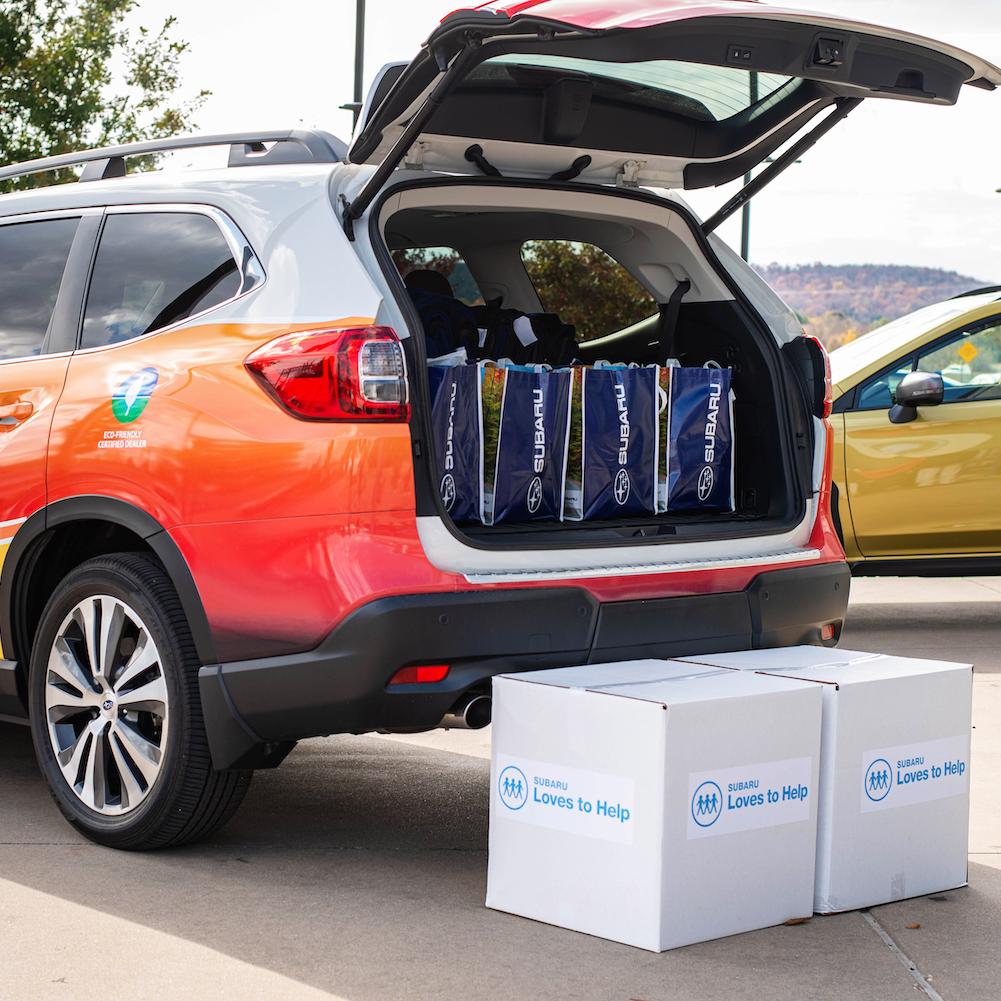
An Adventure Subaru vehicle filled with donations for the Subaru Loves to Help initiative.
Many companies donate time, money, and resources to help families in their communities through difficult times and ever-growing expenses. Adventure Subaru of Northwest Arkansas takes it a step further, assisting people as they attain the skills to lift themselves above those challenges and move forward toward a fuller life.
The 23-year-old retailer, located in Fayetteville, Arkansas, was named the 2022 Subaru Love Promise Retailer of the Year for its work with local nonprofit organizations. Over the past 10 years, Adventure Subaru has donated more than $3.2 million to 70-plus charities and initiatives in Northwest Arkansas, according to the retailer.
One of Adventure’s more unique and far-reaching collaborations is with the Single Parent Scholarship Fund of Northwest Arkansas, which provides grants and support services to single parents seeking college degrees. The results are life-changing: Through higher education and better-paying jobs, the Fund raises families’ living standards and inspires younger generations who see their parents achieve.
“We’re hoping to push up those folks, reduce their reliance on government funds and break the cycle of poverty,” said Tyler Clark, CEO of the Single Parent Scholarship Fund. Since its founding 38 years ago, the Fund has distributed more than $20 million to 10,000 eager students.
Still, the need is greater than the funds. Arkansas has the fourth highest child poverty rate in the U.S., largely due to low-income households headed by parents without higher education: Arkansas ranks near the bottom of U.S. states when it comes to the number of residents who have earned a bachelor's degree or higher.
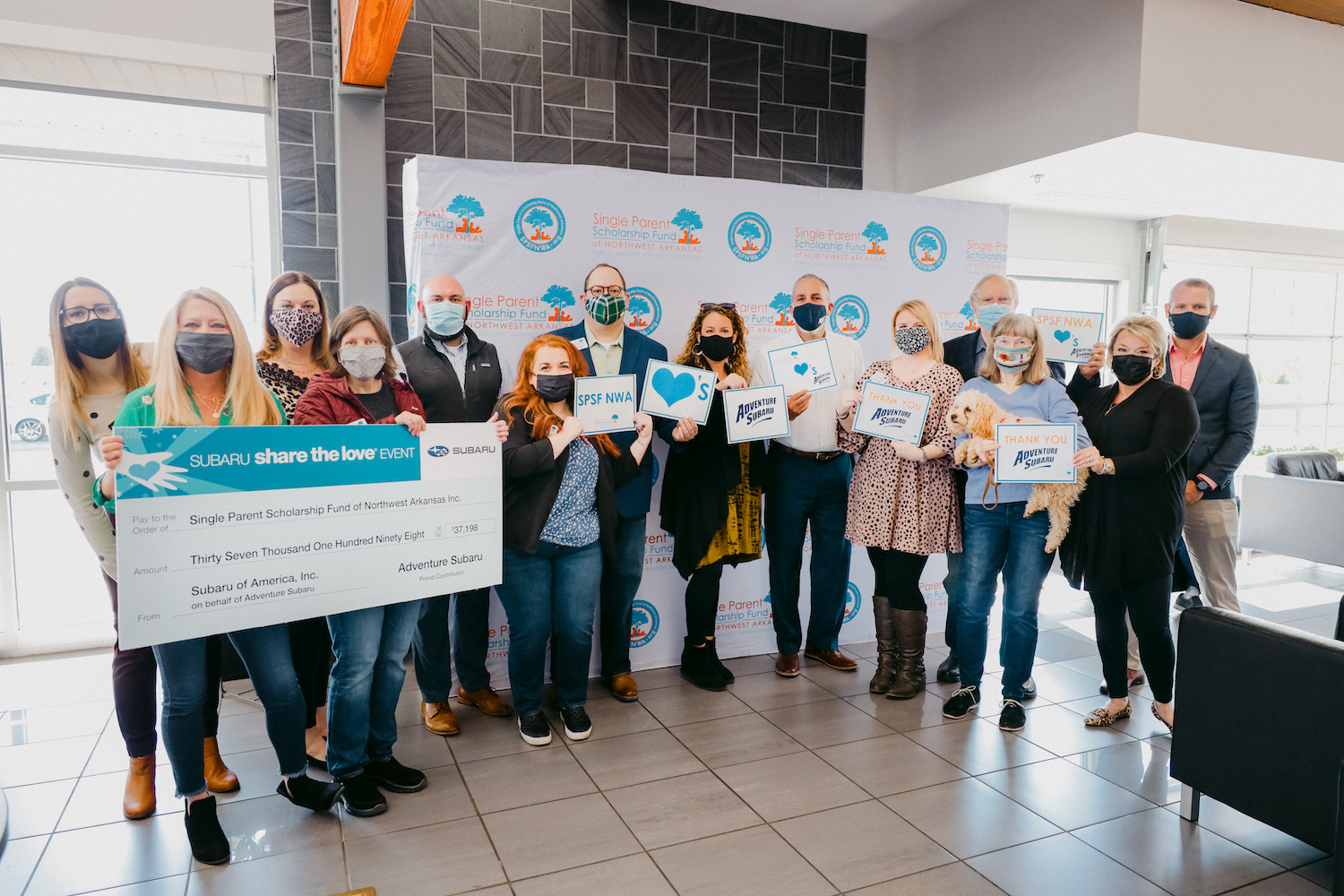
Access to higher education opens doors for Arkansas families
This spring, enrollment in the Single Parent Scholarship Fund of Northwest Arkansas jumped 25 percent to 188 students, up from the usual 145, who will utilize $392,000 in grant money. Recipients can use the funds for tuition, books, childcare and even emergency expenses like car repairs, Clark said.
The average grantee is a first-generation college student, about 32 years old, working a full-time job without health insurance and relying on government programs to supplement their income. Students can choose from 24 institutions, including state colleges that offer classes online.
Scholars have earned certificates, associate and bachelor’s degrees, and even a few medical degrees. Among the most popular majors are social work, nursing and education, often because families were helped by professionals in those areas and students are looking to pay it forward. “I’m so proud of our recipients,” Clark said. Those in the program must continue to meet certain standards, such as a minimum GPA.
Knowing how much single parents must juggle to attend college, the Fund provides multiple support services that include wellness and mental health counseling, help with applying for federal tuition grants and child support, resume assistance, tutoring, status checks and food benefits.
The impact of the program multiplies as the children of earlier grant recipients develop a college mindset. “For the second generation, it’s now a reality for them to go to college,” Clark said. “I love the stories of recipients doing homework at kitchen tables with their kids.”

How businesses like Subaru can help make nonprofit missions possible
“Supporters like Subaru helped make this possible,” Clark continued. “Subaru walks the walk and talks the talk. They do lots of community events and keep it local.”
Indeed, the automaker’s nationwide community outreach programs all feature a local focus. During the annual Subaru Share the Love Event, held between November and January, Subaru donates $250 to a customer’s chosen national or hometown charity for every new vehicle purchase or lease, plus an additional amount for hometown charities at participating retailers. “The amount the retailer contributes to the hometown charity will vary, anywhere from $50 to more than $250 per transaction,” said Danielle Dotson, marketing director of Adventure Subaru.
The Single Parent Scholarship Fund of Northwest Arkansas is one of these hometown charities. The collaboration began in 2017 when Adventure Subaru was a sponsor for one of the scholarship program’s fundraising events. One of the founders of the Fund is the late father-in-law of an Adventure salesperson. “When it came time to select hometown charities for 2020’s Share the Love event, [the Fund] seemed like a natural fit,” Dotson told us. “They have a wide reach and align with the values of the Subaru Love Promise by helping people in our community and making Northwest Arkansas a better place to live and work.”
Subaru is guided by the Subaru Love Promise, its vision and promise to be a positive force in the communities where Subaru and its retailers live and work. When deciding what programs to sponsor, among the factors Subaru retailers consider are which initiatives will have the greatest impact, how the community will be helped and who will be affected. “We want to know, ‘How can we be more than a car dealer? How can we actively make our community a better place?’” Dotson added.

More companies are starting to ask themselves the same questions. For many businesses, the COVID-19 pandemic was a wake-up call — revealing how widespread the nation’s needs are and how much work remains to be done to improve quality of life in U.S. communities. Many leaders realized if they weren’t already involved, it was time to get active.
“COVID-19 was a time to see what corporations were made of. It was a watershed moment. Everyone stepped up,” Clark observed. “You can't sit on the sidelines anymore if you are a corporation. If you couldn’t donate, you had to be onboard with your local community and find a fit for your business.”
The retailer’s work in Northwest Arkansas illustrates what’s possible when local businesses and nonprofits come together, and Dotson encouraged business leaders to reach out and connect with nonprofits in their communities.
“We like leading by example,” she said. “Local organizations are the heartbeat of the community, and we want to meet their needs and pledge to do more for the community. We know that businesses have an opportunity [to help]. You can do work, still sell cars, make people’s lives better and try to be better members of the community.”
Images courtesy of Subaru of America, Inc.
This article series is sponsored by Subaru and produced by the TriplePundit editorial team.
CEOs Know 'Business-As-Usual' Isn't Working, But Many Are Too Tapped Out to Change
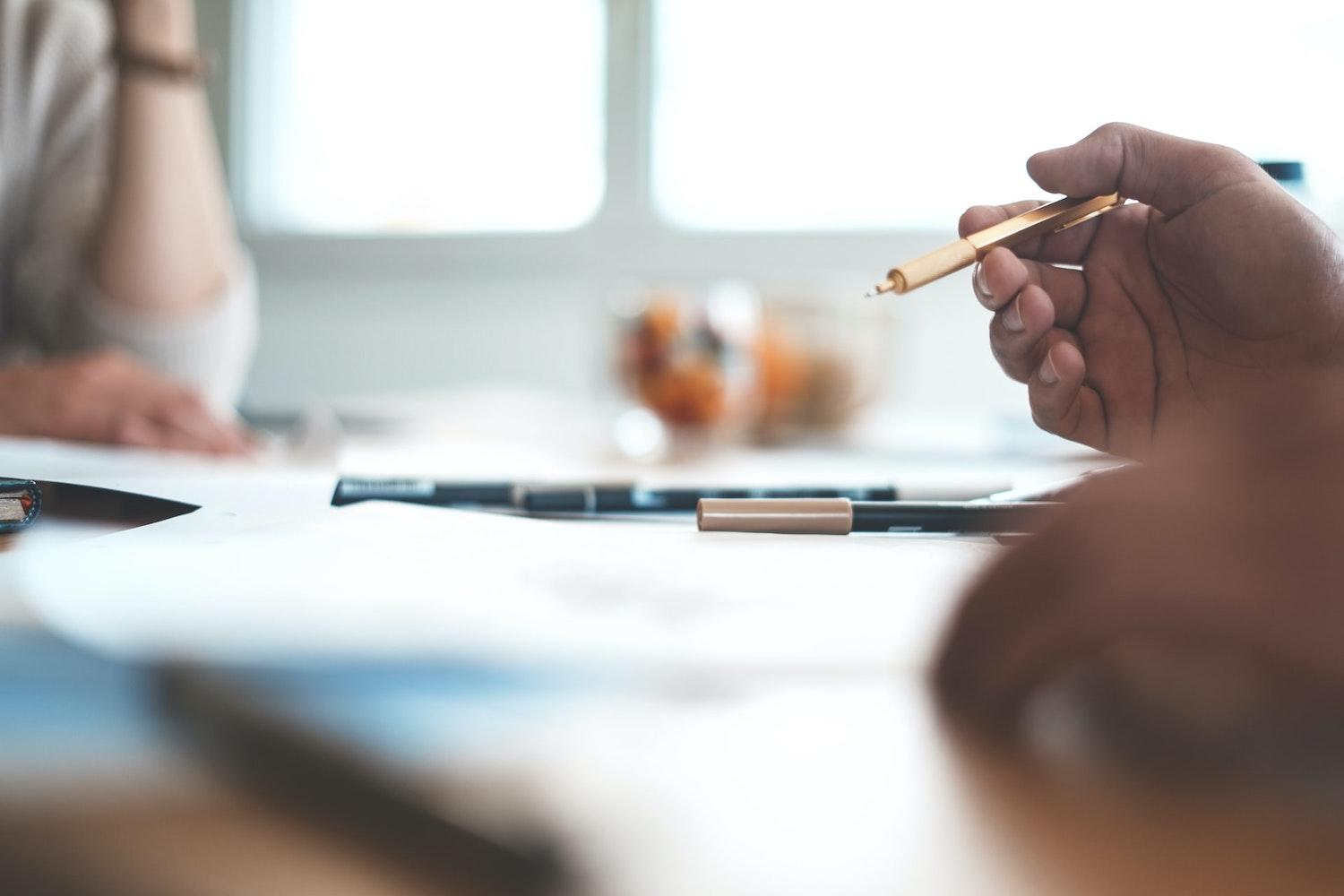

We've heard it for years — "business-as-usual isn't working" — and the annual PwC CEO Survey indicates executives are well aware. Nearly 40 percent of more than 4,000 responding global CEOs think their companies will no longer be economically viable in a decade if they continue down their current path.
That's a pretty big deal. Yet while one would think such a grim consensus would spur an immediate push for change, many executives told PwC they don't have nearly enough time to think and talk about the future. Maintaining current operating performance consumed the biggest share of CEOs’ time last year, according to the survey, and executives admitted they'd rather spend more time evolving their companies' strategies to meet future demands.
Findings like these reflect the "dual imperative" facing CEOs around the world as they look to reinvent their businesses for the future while navigating a laundry list of daunting challenges in the present day, the PwC CEO Survey found. "If organizations are not only to thrive but survive the next few years, they must carefully balance the dual imperative of mitigating short-term risks and operational demands with long-term outcomes — as businesses that don’t transform, won’t be viable," Bob Moritz, global chairman of PwC, said in a statement.
So, will business leaders act to save themselves, or will they be too busy with next quarter's P&L? Let's take a closer look inside the survey to see what executives are saying — and what it could mean for the future.
Executives view climate change as both a short- and long-term threat, but most are failing to address it proactively, PwC CEO Survey shows
While managing climate risk is a long-term challenge that continues to vex executives, the PwC CEO Survey indicates many are also concerned about the effects of climate change in the here and now.
Most of the CEOs surveyed expect their businesses to feel some degree of impact from climate change within the next 12 months. About half predict the effects of climate change will have a "moderate," "large" or "very large" impact on their cost profiles. More than 40 percent anticipate impacts to their supply chains, while around a quarter are worried about climate-related damage to their physical assets.
Their concerns are warranted: The 10 most significant climate-related disasters to strike the world last year caused more than $3 billion worth of damage each, according to the World Economic Forum.
Still, the way they respond could use some work. "Deeper statistical analysis of the survey shows that the CEOs who feel most exposed to climate change are more likely to take action to address it," PwC researchers observed.
"This kind of reactive approach is understandable — when your house is in the path of a forest fire, you reach for the hose — but it creates risks of its own," they continued. "Combating climate change requires a coordinated, long-term plan. It won’t be solved if the only companies working on it are those that face immediate financial impact."
Beyond issues with reactivity, the researchers underscore that they "don't know how much" the actions most often taken by businesses — such as decarbonization initiatives and moves to innovate more climate-friendly products and services — "will move the needle, particularly in the near-term, which, in light of emissions already in the atmosphere, promises continued warming under virtually every scenario."
While it remains murky if business actions will do anything to curb their climate risk in the short term, the researchers warn that many long-term corporate climate strategies are also incomplete or less effective than they could be — setting the stage for even more serious risk in the years to come.
More than half of all CEOs surveyed, including 70 percent of those at U.S. companies, say their teams have no plans to apply an internal carbon price to decision-making, "even though doing so could help them account for considerations like taxes and incentives, and clarify strategic trade-offs," the researchers found. Many are also dropping the ball on reporting, as another recent PwC survey found that 87 percent of global investors think corporate reporting contains unsubstantiated sustainability claims, often referred to as “greenwashing.”
CEOs predict declining global economic growth, but is that really a bad thing?
Nearly three-quarters (73 percent) of CEOs believe global economic growth will decline over the next 12 months. This is a marked departure from recent years, as more than 75 percent of respondents to the 2020 and 2021 iterations of the PwC CEO Survey said they thought economic growth would improve. It's also the most pessimistic CEOs have been regarding global economic growth since the PwC CEO Survey began asking this question 12 years ago.
This comes as no major shock, as other recent polling indicates CEOs around the world are bracing for a recession in 2023. Still, it begs a few questions: Is a slowdown in economic growth inevitable, and is it even a bad thing?
In the decades since economist Milton Friedman declared that the social responsibility of business is to increase profits for shareholders, conventional reason has dictated that the ultimate marker of business health is to grow bigger and bigger every year, with solid shareholder returns that climb on a quarterly basis.
Yet study after study indicates that the never-ending pursuit of more consumption, more profit and more money does not equate to better quality of life across the economy — and the spoils of rugged capitalism are not shared equally. In the U.S., for example, CEO pay has grown by a staggering 1,460 percent since 1978, while median worker pay has not even kept pace with inflation, increasing by a mere 18 percent over the same period. U.S. CEOs were paid 399 times as much as a typical worker in 2021.
So, if the dogged pursuit of "more, more, more" does not increase quality of life for the many, and workers by and large find themselves more wage-poor than their parents were, who really benefits from eternal economic growth as a marker of success? Even businesses stand to lose out as CEOs cash their bloated paychecks while predicting their companies will be belly-up within a decade.
Against a backdrop like this, it makes sense that conversations around degrowth are having a major moment in mainstream business circles. As the name implies, degrowth calls for intentional reductions in production and consumption to stay within the boundaries of a resource-constrained world — particularly in rich countries, allowing developing countries to have a greater share of the economic pie (and the global carbon budget).
While respondents to the PwC CEO Survey stop far short of advocating for strategic degrowth, they don't plan to cope with the impending recession in the way many might expect. While over half of responding CEOs say they are moving to cut operating costs and raise prices, the majority (60 percent) say they do not plan to reduce the size of their workforce in the next 12 months, and 80 percent say they have no plans to reduce compensation.
Still, it makes sense that predictions about the worst recession in a century would be preoccupying for executives, but as Moritz of PwC observed, those that don't keep the future in mind are destined for failure. This type of push and pull between long-term longevity and short-term profit is one that has defined conversations around stakeholder capitalism and corporate responsibility for as long as they've existed. Parsing through these survey responses, it could be that Mother Nature — and the markets — will finally force executives' hands, pushing into fruition something that for decades was simply words.
Image credits: Marvin Meyer and Ryoji Iwata via Unsplash
The Real Facts About 'Anti-Woke' Legislation

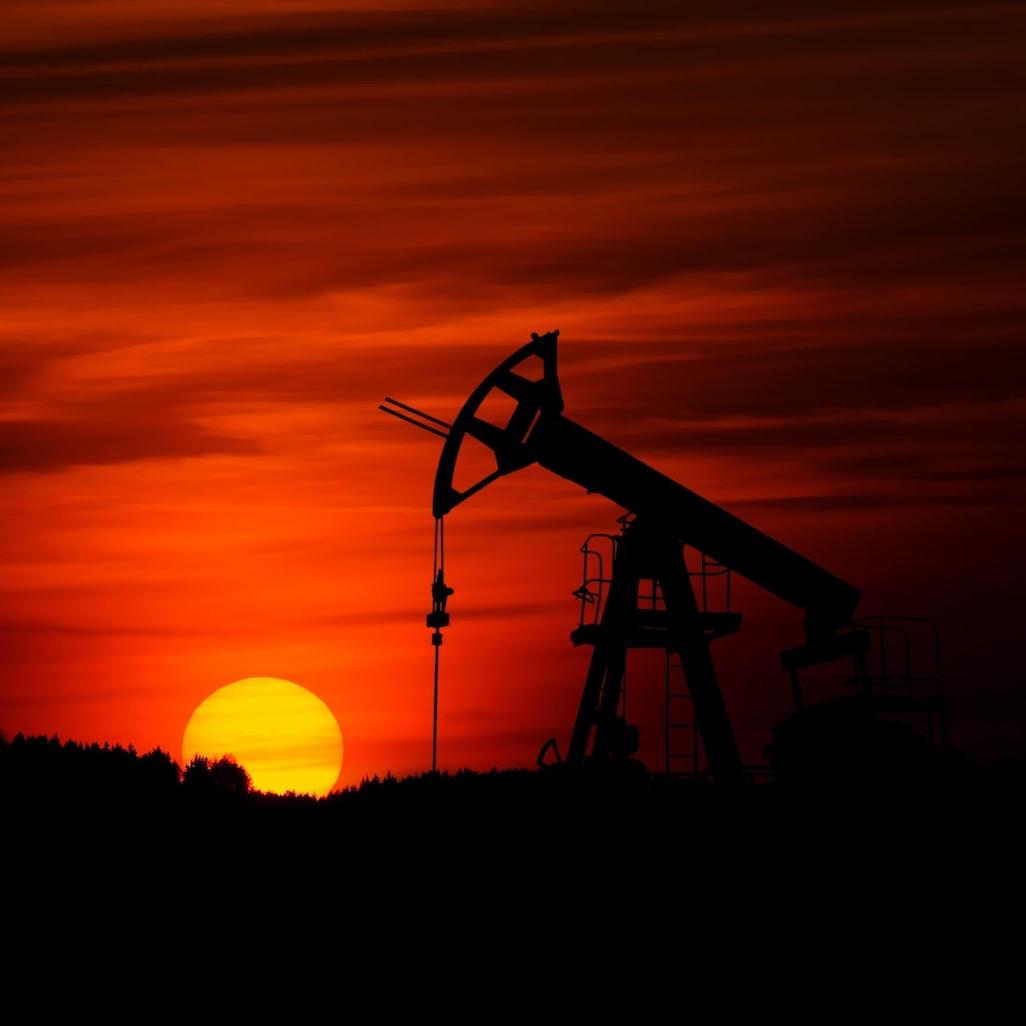
Legislators in some U.S. states have been rushing to protect fossil energy stakeholders with new laws under the guise of safeguarding worker pensions. However, these so-called anti-woke actions are already on track to backfire in one state, and are likely to do the same in half a dozen others.
Follow the anti-woke leader…
The term “woke capitalism” was coined just a few years ago. It refers to corporations that whitewash their business-as-usual policies with a veneer of do-gooderism.
From the anti-woke perspective, government pension funds that invest in renewable energy are simply projecting a public image that curries favor with Democratic politicians and their allies. The argument goes further to allege a breach of fiduciary duty. The result is real or potential harm to the fund, and by extension harm to workers who contribute to and depend on their pensions.
Texas has emerged as a leader in the anti-woke movement. As it happens, Texas is also a leader in the U.S. wind industry and other renewable energy fields. Nevertheless, the state’s oil and gas industry remains a powerful force. In 2021, Texas Gov. Gregg Abbott signed a bill into law, SB 13, that explicitly protects the oil and gas industry. The new law is designed to prevent state pension funds from “boycotting” fossil energy companies.
“‘Boycott energy company,” the law explains, means “refusing to deal with, terminating business activities with, or otherwise taking any action that is intended to penalize, inflict economic harm on, or limit commercial relations with a company because the company … invests in or assists in the exploration, production, utilization, transportation, sale, or manufacturing of fossil fuel-based energy.” Companies that conduct business with the protected categories are also protected under the umbrella of the law.
…down the drain
If it seems that SB 13 will ultimately shoot Texas in its own economic foot, that already appears to be a likely outcome.
The wheels of the law were set in motion by the state's comptroller last March. By April, National Public Radio reported that loopholes in the law could limit its impact on renewable energy investment. Adding insult to injury, the law could have an unintended impact on diversified firms that hold fossil energy assets as well as renewables.
For a window on the outlook, Wharton School of Business Professor Daniel G. Garrett and Federal Reserve Bank Senior Economist Ivan T. Ivanov assessed the impact of SB 13 on the municipal bond market in Texas. A similar bill protecting the gun industry, SB 19, was also included in the analysis.
“In 2021 Texas enacted laws that prohibit municipalities from contracting with banks with certain ESG policies, leading to the exit of five of the largest municipal bond underwriters from the state,” they noted in a study published under the title, “Gas, Guns, and Governments: Financial Costs of Anti-ESG Policies.”
Assessing the sudden loss of competition on the marketplace, the authors concluded that “Texas issuers will incur $300 million to $500 million in additional interest on the $31.8 billion borrowed during the first eight months following enactment.”
Proceed at your anti-woke risk
Despite the warning signs, the anti-woke movement has already spread to other states. To help anticipate the impact, the progressive organization Sunrise Project joined with As You Sow and the Ceres Accelerator for Sustainable Capital Markets to apply the Texas analysis to state and municipal bond markets in Florida, Kentucky, Louisiana, Missouri, Oklahoma, and West Virginia.
The analysis, conducted by Econsult Solutions, Inc., was released last week. It describes the impact of removing “major, proven financial companies” from the marketplace.
“The result is an estimated range of $264 million to $708 million in additional costs for all six states combined, with Florida alone standing to bear $97 million to $361 million,” ESI concluded.
“As elected and appointed public officials in many states consider these bills and similar executive actions, the importance of analyses that shine a light on the costs and benefits will be absolutely critical,” ESI also warned. “The actions represent encroachments into the marketplace by political actors that will have adverse effects on long-term public investments, including public program and state pensions."
Anti-woke or not, renewable energy is here to stay
Demand for renewable energy is skyrocketing around the world. Instead of protecting pension funds, new anti-woke legislation will simply divert funds elsewhere.
For example, one key target of the anti-woke movement is the firm BlackRock, and it shows no sign of slowing down. To the contrary, the firm’s global influence continues to grow. One recent development is an agreement between the government of Ukraine and BlackRock’s Financial Management Advisory Group, which will provide guidance on reconstruction after Russia capitulates. It is fair to assume that the guidance will emphasize decarbonization and ESG (environment, social, governance) principles, as BlackRock has aligned with these principles in the past.
Without the support of fact-based analysis, the ant-woke movement is simply another attempt by Republican leadership to mollify fossil energy stakeholders and stir the emotions of their voting base.
As ESI notes, it is no surprise to find the American Legislative Exchange Council behind anti-woke legislation circulating among U.S. states. Last February, ALEC claimed that it had only discussed model legislation similar to that of Texas but had not formalized it. Be that as it may, last summer Oklahoma enacted a version of the model legislation under the title “Energy Discrimination Elimination Act.”
Another well-known lobbying organization with a track record in the climate change denial area is the Heartland Institute. The organization has taken up the anti-woke canard and is reportedly involved in efforts to stir up local opposition to renewable energy development.
As for motivating the base, it is also no surprise to find the forces of white nationalism and religious extremism at work within the anti-woke movement.
The Republican-controlled House of Representatives is gearing up to hold hearings on ESG and “woke capitalism” this year, with the apparent aim of proving their credentials to fossil energy stakeholders and stirring up the emotions of their angry but aging voter base.
As for everybody else, the hearings could provide leaders in the ESG movement with a golden opportunity to step up and speak out to the up-and-coming generation of consumers, clients and voters, woke as they may be.
Image credit: Zbynek Burival/Unsplash